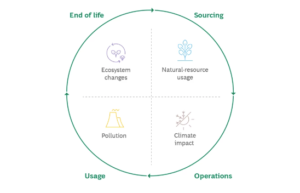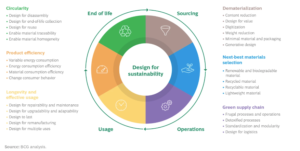The conversation around sustainability in product management often overlooks a critical component at the conceptual stage: market requirements. There’s a contention that product managers don’t allocate sufficient time to consider sustainability as a fundamental market requirement. If sustainability isn’t embedded from the outset, it’s unlikely to be integrated into the product development lifecycle effectively.
This oversight isn’t just about how products operate in a sustainable manner but extends to the materials chosen and the overall sustainability of the product itself. Such considerations should manifest not only in operational efficiencies but also in the sourcing and manufacturing strategies from the very beginning.

Product managers bear the responsibility not only for launching new products but also for enhancing existing lines. This entails a deep dive into how sustainability can become a core component of product requirements. It’s about leveraging manufacturing processes that align with sustainability goals, focusing beyond just throughput and cost to include environmental impact.
The critique here points to a fundamental disconnect in the product development process. It suggests that if product managers remain fixated on traditional metrics without integrating sustainability into the initial market requirements, they miss a critical opportunity to align their products with evolving consumer expectations and regulatory standards.
This perspective emphasizes a more holistic approach to product management, where sustainability is not an afterthought but a prerequisite. It challenges product managers to rethink their approach, advocating for sustainability to be considered as an integral part of the market requirement phase, which then naturally flows into sourcing strategies, product requirements, manufacturing, and aftermarket services.

- Sourcing with Sustainability in Mind: Sustainable sourcing involves choosing materials that minimize environmental impact. This includes selecting biodegradable, recycled, or recyclable materials, which reduces the depletion of natural resources and lowers the carbon footprint of products. For example, opting for plant-based materials or recycled metals can significantly cut down on CO2 emissions and resource consumption.
- Sustainable Operations: Streamlining operations for sustainability can lead to substantial cost savings and efficiency improvements. This involves everything from reducing material use (dematerialization) to implementing green supply chain practices that shorten logistics routes and lower energy consumption. For instance, using water-cooling technology in manufacturing processes can drastically reduce energy use, as seen with GE Healthcare’s MRI systems.
- Design for Usage Efficiency: Products designed for efficiency consume minimal energy and resources during use. This aspect covers designing products that are not only energy-efficient but also long-lasting, reducing the need for frequent replacements and thereby lessening waste. Companies like Nike have made strides in this area by designing products that are easy to assemble and recycle, emphasizing the importance of efficient design.
- End-of-Life Considerations: Circularity is a key principle in sustainable design, focusing on the product’s life cycle end. This involves designing products for durability, easy disassembly, recycling, or repurposing. The aim is to keep materials in use for as long as possible and minimize waste. Products designed with modularity allow customers to repair or replace single components, extending the product’s life and promoting circularity.
Incorporating these sustainable design strategies into product management not only aligns with environmental and regulatory expectations but also opens up new avenues for innovation and competitive advantage. Companies that have successfully integrated these practices, like Fairphone with its focus on responsibly sourced materials and modular design, showcase the tangible benefits of sustainable design, from reduced environmental impact to enhanced customer loyalty and brand reputation.
By focusing on the entire product lifecycle, from sourcing to end-of-life, companies can create products that not only meet the current demand for sustainability but also pave the way for a more sustainable future in product management. This comprehensive approach ensures that products deliver maximum environmental, social, and economic benefits while minimizing their ecological footprint.
